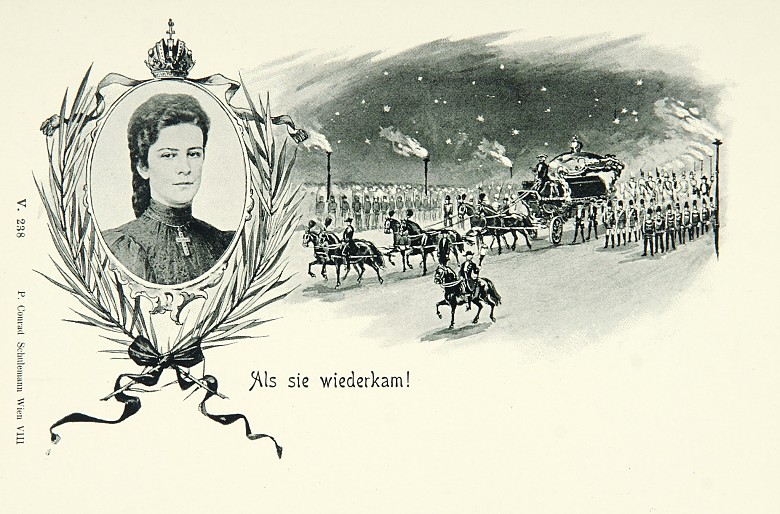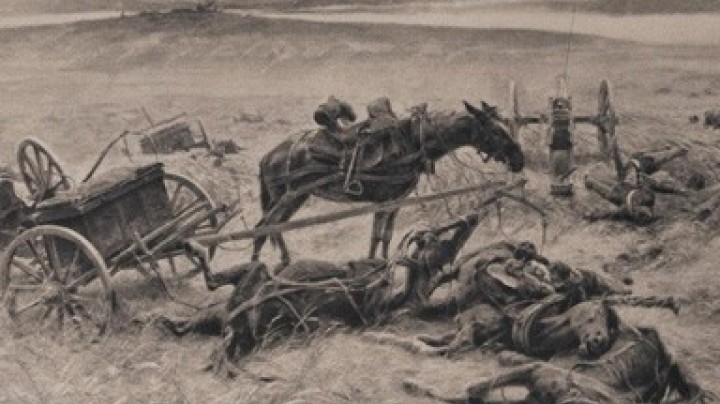Traces of a life: Empress Elisabeth
The enormous popular interest generated by the empress’s personality only began after her death, when her life started to be explored by various writers. Over the past decades this interest in Elisabeth’s fate has developed into a veritable ‘Sisi cult’.
Admirably suited to being portrayed by the entertainment industry, cinematic versions of Elisabeth’s life go back to the age of the silent film. However, the foundations for her international popularity were laid with the ‘Sissi’ film trilogy directed by Ernst Marischka and starring the young Romy Schneider in the role of Elisabeth. Today the fictional character of ‘Elisabeth’ is a phenomenon of popular culture, appearing in the form of musicals, souvenir articles and a plethora of popular historical literature. ‘Elisabeth’ has become a major tourist marque and is today the most well-known member of the Habsburg dynasty: Sisi, the reluctant empress, has thus become the ‘poster child’ for Habsburg tourism, a position that she would surely have abhorred.
The best possible way to explore Elisabeth’s true personality is to visit the Imperial Apartments in the Vienna Hofburg. These include Elisabeth’s residential suite, which has been painstakingly restored over recent years on the basis of contemporary photographs to reflect its state when occupied by the empress. The adjoining rooms house the Sisi Museum, which explores not only the biographical facts of the empress’s life but also the origins of the myth surrounding the figure of ‘Sisi’.
An interesting take on the empress’s afterlife in the guise of the fictional figure of Sissi can be seen at the Hofmobiliendepot, which contains the Imperial Furniture Collection. This showcases items of original furniture once owned by the dynasty that were used to dress the sets of the Sissi films. They are displayed together with stills from the scenes they were used in.
At Schönbrunn Palace, about which Elisabeth had ambivalent feelings, there are numerous traces of the empress’s presence. Her partially reconstructed residential apartments can be viewed, and visitors can walk along the route of the riding track used by the accomplished horsewoman. Hidden away in a secluded corner of the park and not usually open to the public is the empress’s dairy farm, where Elisabeth kept special cows to ensure that she had a constant supply of high-quality dairy products. These formed an important part of her diet, about which the empress was very particular.
A further authentic impression of the empress’s life can be gained at the imperial villa in Bad Ischl, the family’s traditional summer residence, where Elisabeth’s apartments have been preserved together with a number of mementoes associated with her.
Another place associated with the empress is the Hermes Villa on the western outskirts of Vienna in the verdant forested landscape of the Lainzer Tiergarten, a former imperial hunting reserve. Built by Franz Joseph in order to provide a seclude residence near Vienna for his wife, who longed for peace and solitude, this imposing edifice is administered by the Wien Museum and hosts temporary exhibitions.
In Bavaria, Elisabeth’s country of birth, there are far fewer traces of her life: Elisabeth’s family home in Munich, the Herzog-Max-Palais, was demolished in 1937/38 on Hitler’s orders and replaced with a bank. Sisi’s beloved Possenhofen was converted into luxury private apartments in the 1980s following decades of neglect and has not been preserved in its original form.
In Hungary, which Elisabeth felt to be her spiritual home, the palace of Gödöllö near Budapest recalls the empress-queen’s close ties with the country. Having served for many years as a military barracks, it was extensively restored during the 1990s.
Elisabeth’s apartment in the palace at Buda was unfortunately destroyed during the Second World War, as was the Queen Elisabeth Memorial Museum, set up in the Hungarian royal residence in 1908 to commemorate the much-loved Erzsebet királyné (Queen Elisabeth).
Elisabeth’s ‘dream palace’, the Achilleion on Corfu, has also been only partially preserved. The empress having lost interest in this grandiose villa in the classical style that had been erected at huge expense, it stood unused for many years before eventually being sold to the German emperor Wilhelm II in 1907. Today it houses a small museum dedicated to Elisabeth’s memory.













